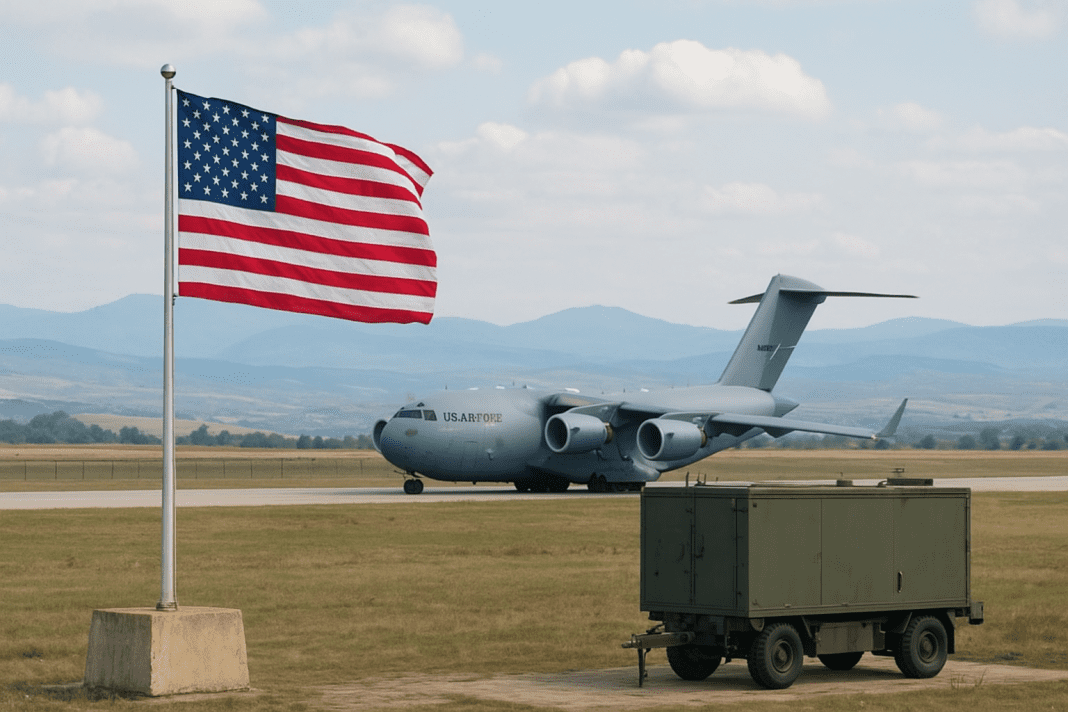The United States will reduce the number of troops stationed on NATO’s eastern flank, including Romania’s Mihail Kogălniceanu Air Base. Romania’s defense ministry said the move reflects shifting U.S. priorities but noted that about 1,000 American troops will remain in the country.
Changing Military Priorities and Troops Movement
According to defense officials, the move is part of a wider plan that includes halting the rotation of a U.S. brigade previously deployed across several NATO countries. This brigade had stationed elements in Romania, Bulgaria, Hungary, and Slovakia. The decision comes at a time when NATO continues to strengthen its presence and activities on Europe’s eastern flank, particularly following the ongoing war in Ukraine.
Washington’s administration has been communicating to its European allies for several years that they must take greater responsibility for their own defense. The United States has been increasingly focusing on securing its own borders and expanding its military attention to the Indo-Pacific region. The change in troops deployment reflects these strategic adjustments and the rebalancing of global commitments.
Putin tests NATO’s red lines: Russian jets breach Poland, Romania, and Estonia airspace
The Mihail Kogălniceanu Air Base, which has long hosted U.S. troops, will continue to function as one of NATO’s most important operational hubs. Over the years, this base has become a key site for training, logistics, and regional coordination among allied forces. The presence of these troops has also supported NATO’s deterrence posture in the Black Sea region, ensuring that Romania remains well-integrated into collective defense mechanisms.
NATO Coordination and Regional Troops Deployment
NATO confirmed that the alliance remains in close contact with the United States regarding the troops changes. Officials stated that adjustments to American troops within Europe are not uncommon and often reflect broader defense strategies. The alliance emphasized that coordination continues to ensure stability and cooperation among member nations.
The realignment of U.S. troops in Europe has been a gradual process, tracing back to earlier policy shifts that prioritized emerging challenges in the Pacific region. The move also highlights the growing importance of Europe’s independent defense capabilities. Officials from various European countries have noted that the change reinforces the need for stronger defense cooperation within the continent.
Russia Sanctions Crisis : Romanian MEP Urges EU to Drop Restrictions Amid Economic Struggles
Concerns have arisen along NATO’s eastern flank amid the Russia-Ukraine conflict, as a smaller U.S. troops presence raises questions about regional security. However, NATO and Romanian officials affirmed that the alliance’s defense structure remains strong, with allied troops continuing to support stability.
U.S. officials have informed NATO partners that the troops reduction affects only rotational units, not permanent deployments. The Mihail Kogălniceanu Air Base will remain a key hub for logistics, surveillance, and training, continuing to host U.S. troops under ongoing defense cooperation.
Romania’s Continued Security Commitments
Romania’s defense ministry has reassured its citizens that the country remains secure and that its partnership with the United States remains strong. The ministry highlighted that NATO’s collective presence in Romania continues to be significant, involving troops not only from the United States but also from France, Belgium, Luxembourg, Portugal, and North Macedonia. This multinational troops presence strengthens regional defense and ensures continued cooperation among NATO allies.
Romania has recently strengthened its own defense systems with support from the United States. It has received an advanced air defense system designed to enhance its ability to protect its airspace, particularly against drone incursions and other aerial threats. This addition marks a major improvement in the country’s defense infrastructure and supports NATO’s overall strategy for airspace protection along the eastern border.
Russian drone prowls Romanian skies for 50 minutes as Poland sees dangerous pattern of provocation
The decision to reduce troop rotations reflects the U.S. military’s evolving global strategy rather than a decline in commitment to European defense. Despite some regional concerns, the continued presence of NATO and allied troops ensures active cooperation in maintaining security.
Officials said the change would not affect Romania’s key role in NATO operations. The Mihail Kogălniceanu base will remain a major hub supporting both air and ground troop missions. Around 1,000 U.S. troops will continue to be stationed in Romania as part of NATO’s broader deterrence efforts.
These adjustments form part of a global realignment, as the U.S. balances its military focus between Europe and the Indo-Pacific while maintaining strong partnerships across NATO’s eastern flank.
